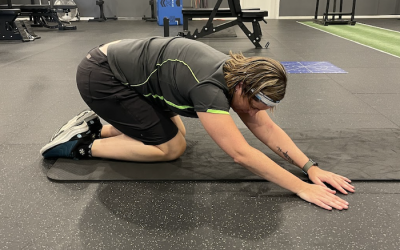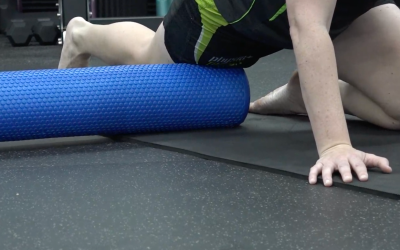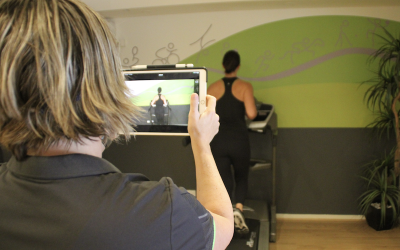Lower back pain? Answer: Cupping!
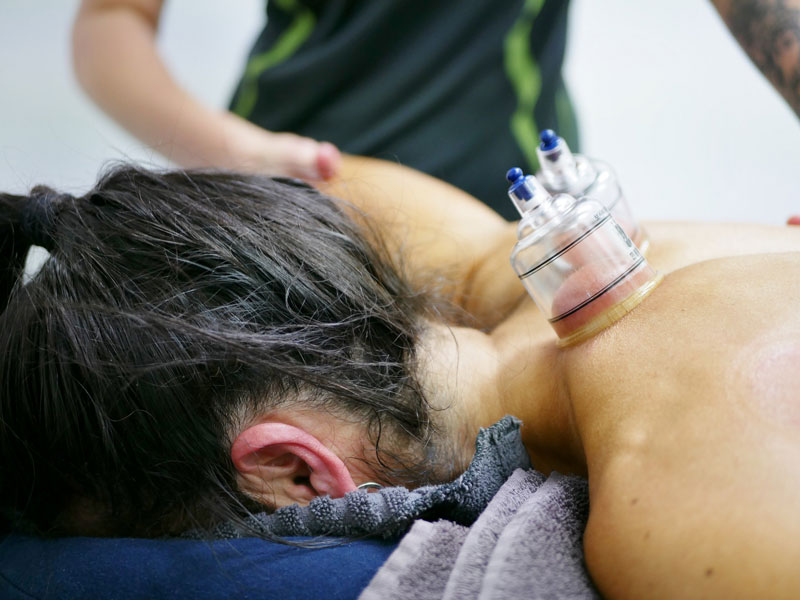
Cupping can assist lower back pain
Cupping is the process of using a vacuum-like device to draw up the muscle and connective tissue into a cup. This has all of the same benefits of massage, except it is a negative pressure, rather than a positive one. Pulling instead of pushing.
Not only is this a great mix up of your treatment, but depending on the treatment that is being used, cupping creates a nice sustained hold of the tissue, with or without movement, which stretches and lengthens the muscle fibres.
Cupping Therapy on the Back
Cupping therapy, when applied to the back, offers a multifaceted approach to addressing various concerns. Firstly, it can be seamlessly integrated with other forms of massage to create a comprehensive treatment for chronic back pain.
By harnessing the power of negative pressure, cupping alleviates muscle tension, a pivotal contributor to lower back pain. The negative pressure from a cupping device acts as a vacuum to pull the tissue into the cup, giving a similar benefit as massage, but with a different sensation.
Cupping Lengthens & Stretches Back Muscles
This process can feel more like the skin and muscles are being pulled, and should not be painful. Not only is this a great way to add variety to your treatment, but depending on the treatment that is being used, cupping creates a well sustained hold of the tissue, with or without movement, which stretches and lengthens the muscle fibres.
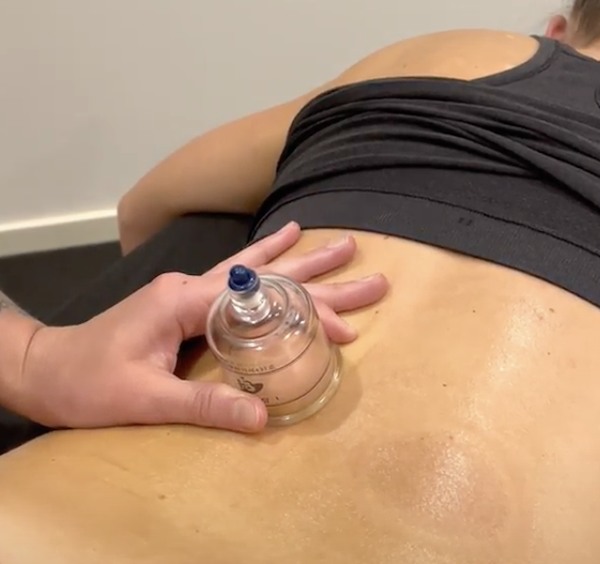
Cupping for Chronic Back Pain
Chronic back pain often has a complex pathophysiology, and muscle tension stands as a significant trigger for discomfort in the lower back region. When muscle fibres excessively tighten (due to overuse, misuse or weakness), they can persist in their contracted state and form trigger points or knots. This means the muscle is impaired and cannot rest or contract properly, resulting in cramping.
As they are stagnant, they become dehydrated which causes the muscle to be very rigid. This dehydration further contributes to the discomfort and aching in the region. Cupping not only helps to lengthen these rigid areas, but also increases the blood flow to these areas, hydrating the cells hence alleviating the rigidity. The same can apply to the fascia of the back, which can become strained sedentary lifestyle, or even overuse.
Fascia refers to a fibrous connective tissue, which forms a cover for many organs, blood vessels muscles etc. Aside from covering the muscles, fascia is key to supporting and holding the muscular system together. Importantly, fascia stabilises muscles and if not functioning adequately it can contribute to body aches.
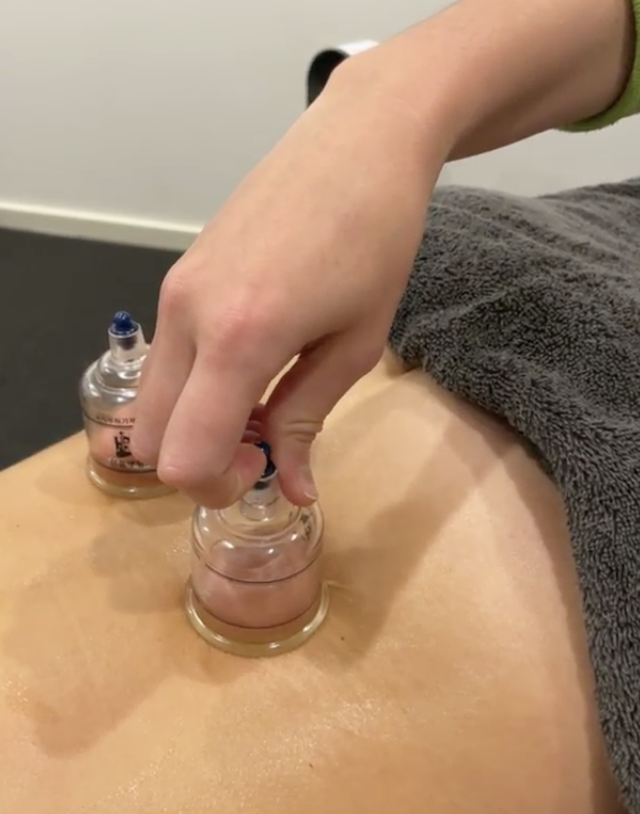
What does cupping do on your back?
The mid to lower back is an area of muscle that is enclosed by a thick layer of fascia. It is connected to many different layers at different points of the muscle, and the fascia can become extraordinarily tight as it is constantly being pulled from every direction.
This is exacerbated in those dysfunctional muscles, which remain in a constant state of tension. Using the cupping technique on this area helps to lengthen the fascia, by lifting and stretching it. Furthermore, blood flow is increased to the fascia, softening it. As a result, the muscles that are attached to it can be released.
Mid to lower back cupping
The mid to lower back is an area of muscle that is enclosed by a thick layer of fascia. It is connected to many different layers at different points of the muscle, and the fascia can become extraordinarily tight as it is constantly being pulled from every direction.
This is exacerbated in those dysfunctional muscles, which remain in a constant state of tension. Using the cupping technique on this area helps to lengthen the fascia, by lifting and stretching it. Furthermore, blood flow is increased to the fascia, softening it. As a result, the muscles that are attached to it can be released.
I personally find cupping great and super effective on areas that are quite thick with muscular and fascia layering – like the lower back.
How long should you do cupping your lower back?
When considering the duration and frequency of cupping on the lower back, it’s worth noting that the procedure itself is relatively succinct, typically spanning a window of just five to ten minutes.
This concise timeframe allows for it to be performed with regular massage practises, to aid the healing process. It be seamlessly incorporated with your regular treatment regime, and results can also be improved with the sustained use of at home exercises.
The frequency of cupping sessions, however, depends on the variable of pain; thus sessions are tailored to the individual’s experience and needs. With progress, treatments can be phased out with larger gaps, or even administered as needed.
Where do you put cups for cupping lower back pain?
During the treatment, the cups are strategically placed on the lower back (or area of concern). Focal points include the erector spinae muscles, which flank the spine.
These superficial muscles not only contribute to posture maintenance but can also tense up in individuals leading sedentary lifestyles. The technique may also extend its reach to the quadratus lumborum muscles, which reside deeper and adjacent to the lumbar region.
The quadratus lumborum muscles may also become tense in individuals with poor posture, and in extended periods of sitting. In certain cases, hip and glute tension may contribute to the lower back pain. This may warrant additional cupping in these regions, or other connected areas.
Side effects of cupping for back pain
With regards to side effects, cupping therapy, while generally safe, has its nuances. Commonly observed side effects include the emergence of bruises, accompanied by tenderness and a mild sense of discomfort.
The hallmark of these cupping-induced bruises appears as dark-hued circles along the back, mirroring the placements of the cups. Alongside these, there might be skin irritation, albeit temporary. Over time, as the initial tenderness subsides, the therapy’s intention often materializes; an alleviation of chronic pain.
Are there any dangers of cupping lower back?
Cupping is regarded as a safe procedure, with minimal risks. However, for individuals with chronic skin conditions, such as eczema or psoriasis, cupping may not be suitable due to potential exacerbation.
Furthermore, if not executed correctly, cupping can lead to unintended bruising, highlighting the importance of entrusting the procedure to trained professionals. Rigorous adherence to sterilization protocols and careful usage of equipment ensures the safety of the patient.
Cupping bruises
The bruises seen after cupping can be alarming, but are actually a normal part of the procedure. Cupping bruises, originate from tiny blood vessels under the skin, called capillaries, being broken by the sustained negative pressure. These capillaries, when broken, leak blood to the skin’s surface. The blood can be seen through the skin, materialising in purple or red circles.
These bruises are unfortunately a distinctive outcome of cupping, but will resolve within one to two weeks. Importantly, the bruises are not a sign of further injury to the muscle.
What to expect after cupping on the back
Beyond the immediate side effects of the procedure, individuals can expect body aches, as well as soreness in the treated area.
Once these initial effects have subsided, the muscle will be more relaxed. In addition, the area will have an improved range of motion. In conjunction, this alleviates the tension and pain experienced prior to the procedure. As previously mentioned, this needs to be maintained with regular sessions.
Your physio can advise you on a treatment plan which will work to minimise lower back pain, and cupping can be an excellent addition alongside lifestyle changes and regular exercises.
– Written by Alli Jennings, Myotherapist
Can cupping tone your muscles? We have all the answers.
4 Quick Stretches to Do After a Run
Join physiotherapist Morgan Deegan as she shares her top post-run stretches. Get ready to enhance your recovery and prevent injuries with these essential exercises.Are you looking to improve your post-run recovery and reduce the risk of injuries? In this article ...
3 Easy Foam Roller Exercises You Can Do At Home
Make good use of your foam roller with these three easy exercises you can try at home. With videos and pictures to follow.Foam rollers have gained popularity as a valuable tool for athletes seeking relief from muscle knots and trigger points. These stubborn areas of...
Running Physiotherapist Specialist Seaford
Are you struggling with nagging running injuries that are hindering your progress and holding you back from reaching your full potential? Perhaps you've hit a roadblock in your training journey, and you're desperately seeking guidance to overcome these obstacles and...

